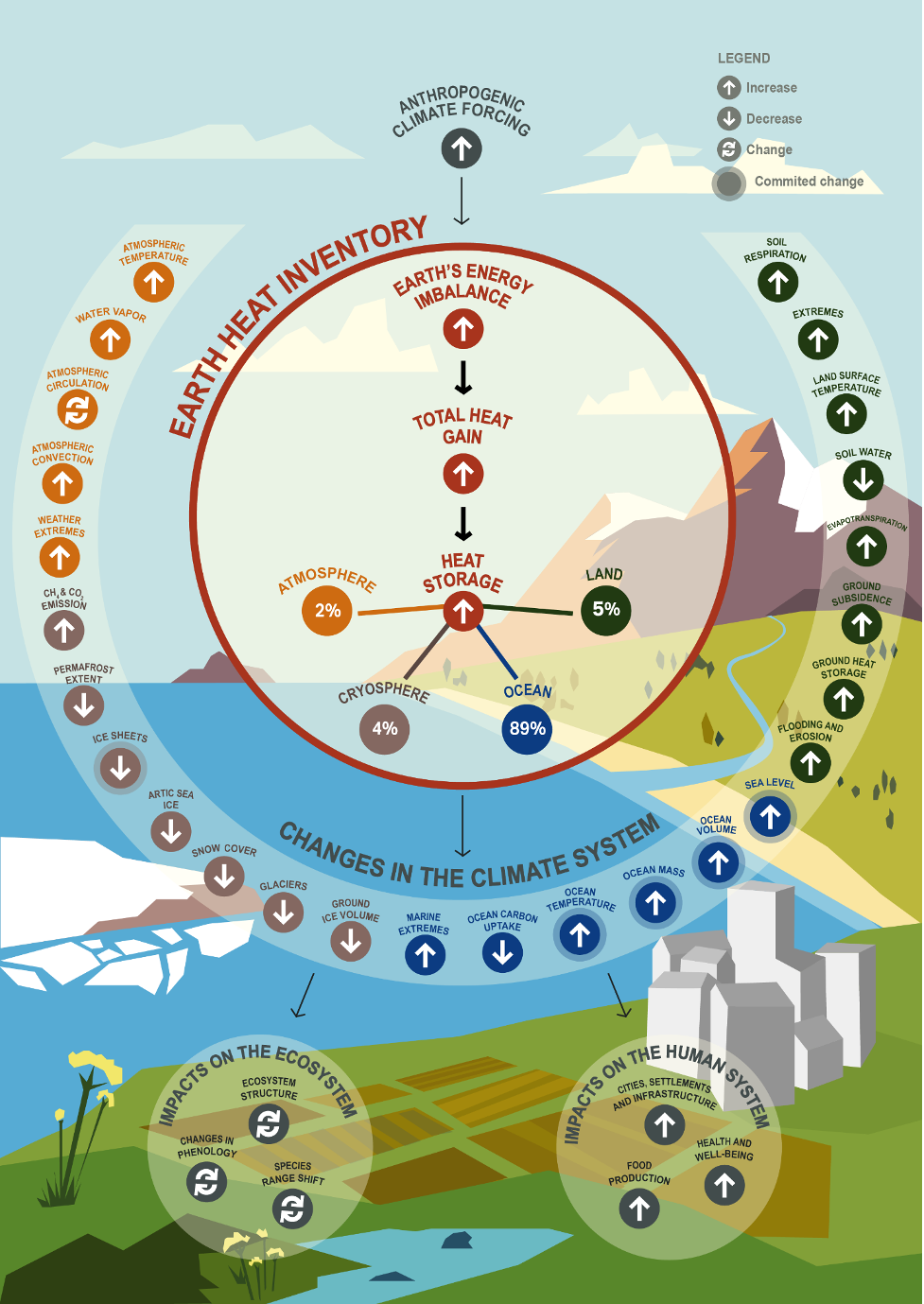Heat stored in the earth system 1960-2020: where does the energy go?
Nearly 70 researchers from dozens of institutes across 15 countries access careful calibrated cross-checked well-documented data from the ocean, land, ice and atmosphere to conclude:
o The Earth has accumulated nearly 0.5 watts (0.48 + 0.1) over every square meter of Earth’s surface over the past 50 years (since 1971);
o More recently (2006 to 2020), heating increased to more than 0.75 watts (0.76 + 0.2) per square meter;
o Most heat entered the ocean (89%);
o Remaining global heat went into land (6%), ice (4%) and atmosphere (1%);
o Global assessment of energy gained and disbursed represents a fundamental metric of changing climate and its implications while warming the ocean, the land, the atmosphere and the cryosphere; and
o Assessment efforts such as these require sustained international cooperation on monitoring and research.
Consequences when stored energy is released
NIOZ director and climate scientist Han Dolman is co-author of the publication: “This study is important not only because it shows where the energy created as a result of the greenhouse gas effect goes, especially to the ocean, but also that the climate system is out of balance and will remain so for the foreseeable future. Such an integrated analysis, based on observations is in fact a warning for the future of possible consequences - extreme weather, increased sea level rise, accelerated calving of ice sheets and impact on marine life - should the energy that is now stored be released again. "
Worrying acceleration
NIOZ oceanographer Femke de Jong, who wasn't involved in the study: "This work shows very precisely how much extra heat is retained in the climate system. The total is clearly going up, even though the temperature we are feeling on land may well be colder for a particular year. It is very worrying that the increase is accelerating in recent years, despite the promises in the Paris climate agreement to to reduce climate change."

Publication
ESSD - Heat stored in the Earth system 1960–2020: where does the energy go? (copernicus.org) von Schuckmann, K., Minière, A., Gues, F., Cuesta-Valero, F. J., Kirchengast, G., Adusumilli, S., Straneo, F., Ablain, M., Allan, R. P., Barker, P. M., Beltrami, H., Blazquez, A., Boyer, T. Cheng, L., Church, J., Desbruyeres, D., Dolman, H., Domingues, C. M., García-García, A., Giglio, D., Gilson, J. E., Gorfer, M., Haimberger, L., Hakuba, M. Z., Hendricks, S., Hosoda, S., Johnson, G. C., Killick, R., King, B., Kolodziejczyk, N., Korosov, A., Krinner, G., Kuusela, M., Landerer, F. W., Langer, M., Lavergne, T., Lawrence, I., Li, Y., Lyman, J., Marti, F., Marzeion, B., Mayer, M., MacDougall, A. H., McDougall, T., Monselesan, D. P., Nitzbon, J., Otosaka, I., Peng, J., Purkey, S., Roemmich, D., Sato, K., Sato, K., Savita, A., Schweiger, A., Shepherd, A., Seneviratne, S. I., Simons, L., Slater, D. A., Slater, T., Steiner, A. K., Suga, T., Szekely, T., Thiery, W., Timmermans, M.-L., Vanderkelen, I., Wjiffels, S. E., Wu, T., and Zemp, M.: Heat stored in the Earth system 1960–2020: where does the energy go?, Earth Syst. Sci. Data, 15, 1675–1709, https://doi.org/10.5194/essd-15-1675-2023, 2023.